Storage Gets Cool: Images Of EMC World 2008
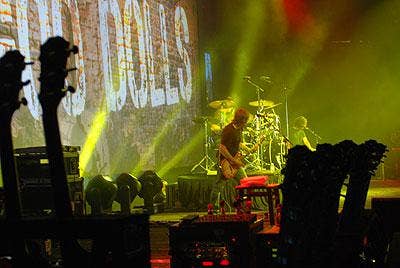
The night before EMC World 2008 officially opened, EMC rocked the Mandalay Bay Conference Center in Las Vegas with a live concert by the Goo Goo Dolls. At one point, lead singer John Rzeznik jumped off the stage to stand by one of the food stations set up around the stage and said, "This is the first-ever all-you-can-eat buffet rock show."
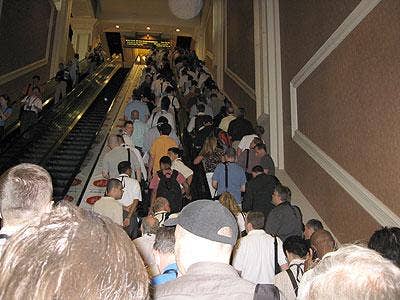
On opening day, the crowd of attendees heading upstairs to attend the first sessions caused a huge backup in front of the two escalators going up. That was alleviated the next day by adding a third ascending escalator.
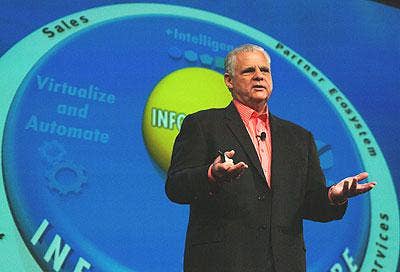
Joe Tucci, EMC chairman, president, and CEO, kicked off the conference with a keynote that focused on his company's two main themes of the conference: the importance of cloud computing, and the importance of the consumer and small business market.
Tucci said that data is being stored at an annual growth of 60 percent, a rate that will continue to accelerate going forward.
As an example, he cited his own digital footprint, or the amount of digital data he personally creates. Adding up the average of 50 e-mails he generates per day, the four hours of television saved on his TiVo, his seven digital photos per week, the average of 15 times his image that is probably caught on video surveillance systems per week, Tucci said his footprint is about 3.8 Gbytes per day.
Extrapolating that to the 9,000 attendees of the conference, he said the conference digital footprint was about 34.7 Tbytes per day.
About 70 percent of all digital information is created by individuals, Tucci said. "But 85 percent of it will get sucked up and managed by big organizations," he said, citing as examples Google, or Yahoo's Flickr.
Afterward, at a press conference, Tucci said that EMC's pending acquisition of Iomega, of San Diego, is a part of its overall strategy of preparing to enter the consumer and SOHO market.
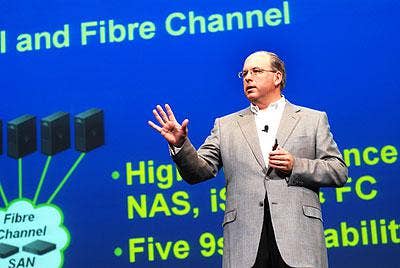
David Donatelli, executive vice president of the company's storage product operations, took the stage to unveil EMC's long-expected entry into data deduplication with new disk backup appliances feature dedupe technology from San Jose, Calif.-based Quantum.
The EMC Disk Library 3D 1500 and DL3D 3000 virtual tape libraries (VTL) include dedupe software licensed from Quantum. The DL3D 1500 is based on EMC's Clariion CX310 array, and provides up to 36 Tbytes of usable capacity, while the DL3D 3000 is based on the Clariion CX340 array for a usable capacity of up to 148 Tbytes. Both use 1-Tbyte SATA hard drives and feature RAID 6 protection.
EMC will add the Quantum dedupe technology to its existing DL 4000 disk-based VTL as an optional upgrade by the end of July, he said.
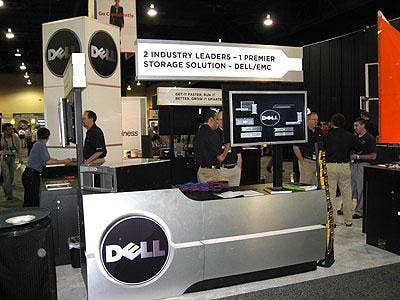
Dell, of Round Rock, Texas, is EMC's largest reseller partner, accounting for about 15 percent of EMC's overall revenue. So it was no surprise that Dell had a booth at conference. Nor was it any surprise that Dell did not show any products from its recent acquisition of EqualLogic, which gave it an iSCSI product line which competes with some of EMC's own.
Dell personnel at the booth would talk about EqualLogic, but only very quietly.
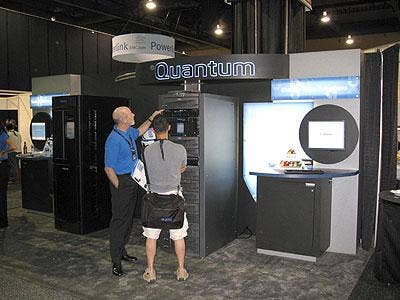
Quantum, which is providing the deduplication technology behind EMC's new storage arrays, also had a booth at the conference. The focus there was on Quantum's own disk-to-tape storage appliances, based in part on the same dedupe technology Quantum now provides to EMC.
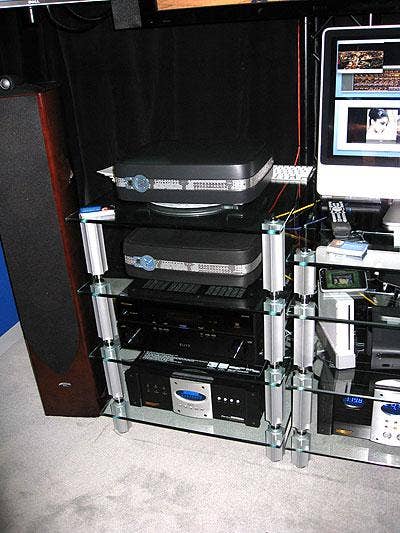
Intel, of Santa Clara, Calif., used the conference to show of its new SS-4200-E consumer-level storage appliance based on EMC's LifeLine software. That appliance is already available through Intel's system builder community. Intel also discussed Fibre Channel over Ethernet (FCoE).
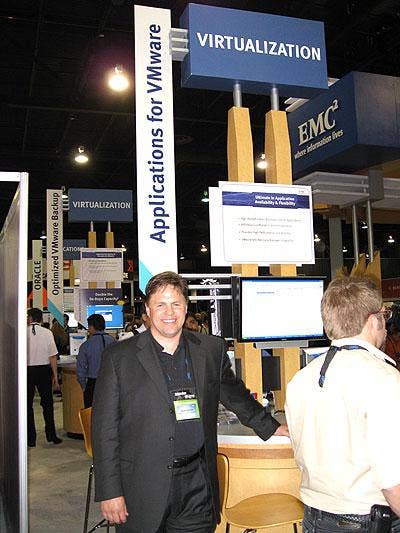
Keith Norbie, director of the storage division of Nexus Information Systems, a Plymouth, Minn.-based solution provider and partner to EMC, said after exploring the conference expo that what caught his eye most was EMC's joint engineering with VMware, of Palo Alto, Calif.
"EMC has put together a number of joint opportunities with VMware that are really good," Norbie said. "It's not often I'm shocked on the positive side."
Norbie specifically cited VMware's Site Recovery Manager, which works with existing VMware products to manage and automate the disaster recover process.
EMC is offering a pre-integrated, pre-scripted solution with Site Recovery Manager and a couple of EMC arrays, either Clariion, Celerra, or DMX, Norbie said. "I'm shocked that EMC went from not being in the (virtual disaster recovery) market to having a competitive offering," he said. "They did their homework."
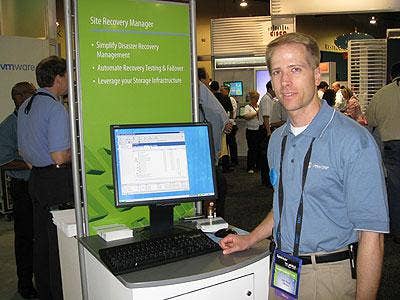
Jon Bock, senior product marketing manager at VMware, demonstrated his company's LifeCycle Manager, which handles virtual server lifecycles in the same way any file is managed from creation to deletion. "This stages a virtual machine, creates it, and auto decommissions it," he said.
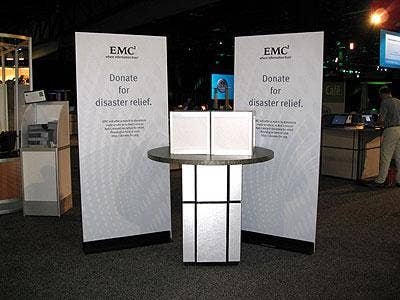
EMC's Tucci, during his keynote, called for attendees to donate cash to relief efforts in Myanmar and China, and promised that EMC will match all attendee donations dollar-for-dollar.
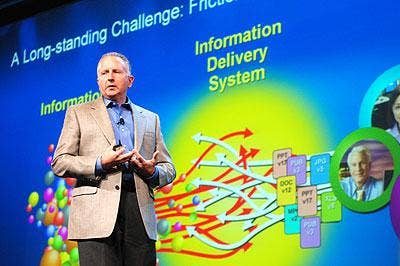
Howard Elias, president of EMC global services and resource management software, started Day Two of the conference by saying that the biggest challenge with managing information is the friction that still exists between the information created by users and the information created by others that users want to use.
Such information is stored in silos, but for info-centric computing it has to be highly available for others to use. For example, Elias said, Zillow.com is able to overlay real estate sales from places like Craig's List over Google Maps to provide a new view of the data.
For that reason, Elias said, the data center of the future is more than just taking people out of the system. "It's understanding the process to deliver information, and automating the process," he said.
EMC has been developing and acquiring tools to automate a wide range of data center functions with a goal of developing the dynamic data center, Elias said.
"The dynamic data center is completely flexible to the point you want automated," he told attendees. "You want business SLAs (service level agreements). Not storage or network SLAs, but business SLAs."
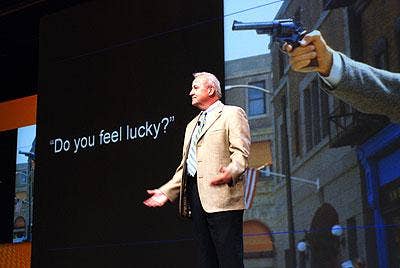
Art Coviello, president of RSA, the Security Division of EMC, said that he expects 5 percent of IT spending in 2009, or about $55 billion, will be spent on security, compared to 3 percent of IT spending, or $35 billion, in 2006.
"Raise your hand if you feel more safe in May of 2006 than you did in May of 2001," Coviello said. "Oops. No takers."
Coviello said that, during the last RSA Conference, one speaker said that more malware will be developed this year than legitimate software. And, Coviello said, this is happening at a time when workers are dealing with so much information that can be compromised with the push of a button in response to a pop-up screen that asks, are you sure you want to do this.
"It's the equivalent of saying, Do you feel lucky?" he said. "Well, do you?"
The answer, Coviello said, is a systemic approach to information security, including understanding the risks before developing policies, and then applying the policies based on the value of the information.
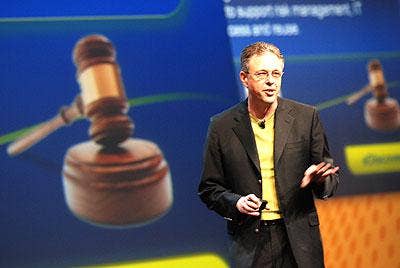
Mark Lewis, president of EMC's Content Management and Archiving Division, unveiled a roadmap for his organization that included improved interfaces for the Documentum enterprise content management software, tighter integration between Documentum and the Captiva image capture application, and improved archiving, search, and discovery capabilities.
Lewis and Whitney Tidmarsh, vice president of strategic marketing for EMC software, also unveiled EMC's upcoming move into the on-line business collaboration market and interactive content management.
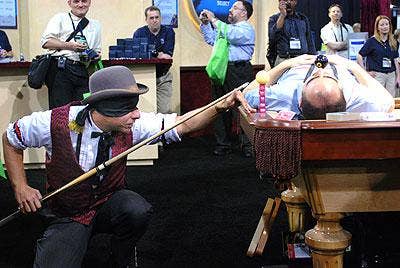
It wasn't all business. Chef Anton dazzled attendees of one of EMC's several booths with some of the best trick pool shots ever seen.
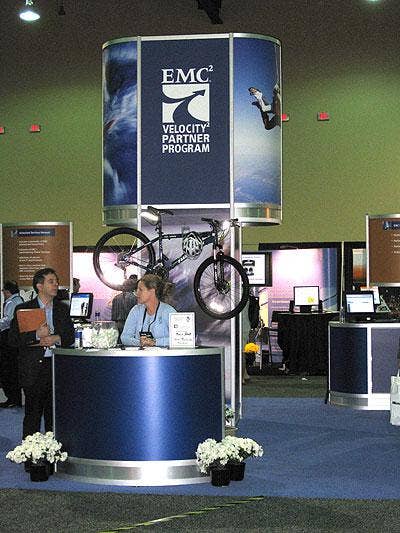
A large number of EMC solution providers used the EMC World Conference as a way to reach many of the 9,000 attendees, the vast majority of whom were IT decision makers. Many of the solution providers had booths in the EMC Velocity Partner Program pavilion.
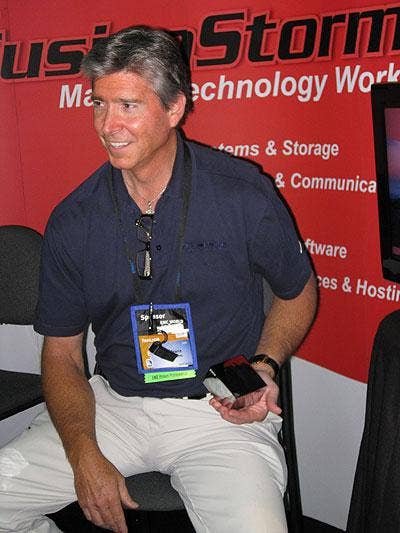
Marc Franz, national sales director of EMC and VMware solutions at FusionStorm, a San Francisco, Calif.-based solution provider, talked about those two vendors at his company's booth.
However, his tone grew most excited when the conversation turned to the little chrome box in his hand. That is a thin client from Pano Logic, Menlo Park, Calif., which, when used with desktop virtualization software from VMware and others, can replace the standard desktop PC for most employees.
Franz said that most users do not notice a big difference between a virtual desktop PC and a physical desktop PC. But businesses do. "The power savings alone gives an ROI (return on investment) within six months," he said.
While a ChannelWeb reporter was standing at the FusionStorm booth, one of the solution provider's customers, who works with thin clients from Wyse Technology, San Jose, Calif., walked up and took a look at the Pano Logic device.
After Franz gave his 30-second demo, the customer said, "This is my Wyse? You yanking my @#!%?"
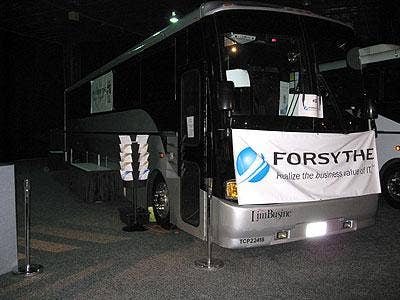
Forsythe Solutions Group, a Skokie, Ill.-based solution provider and EMC partner, rented one of several "LimBusines" inside the conference center, where it demonstrated disaster recovery and other solutions based on EMC products.